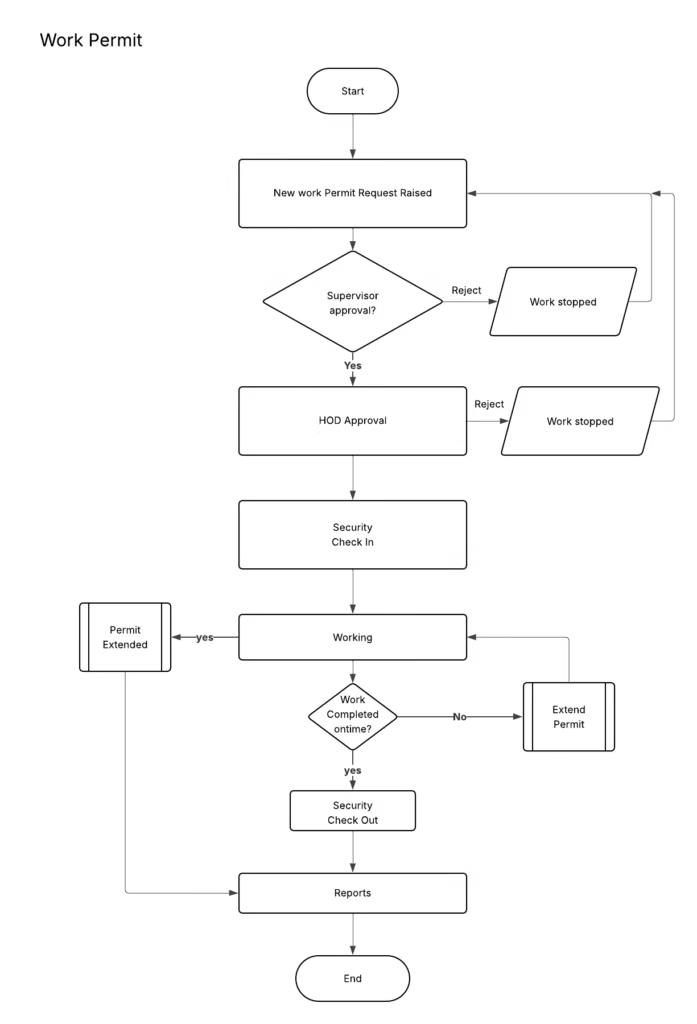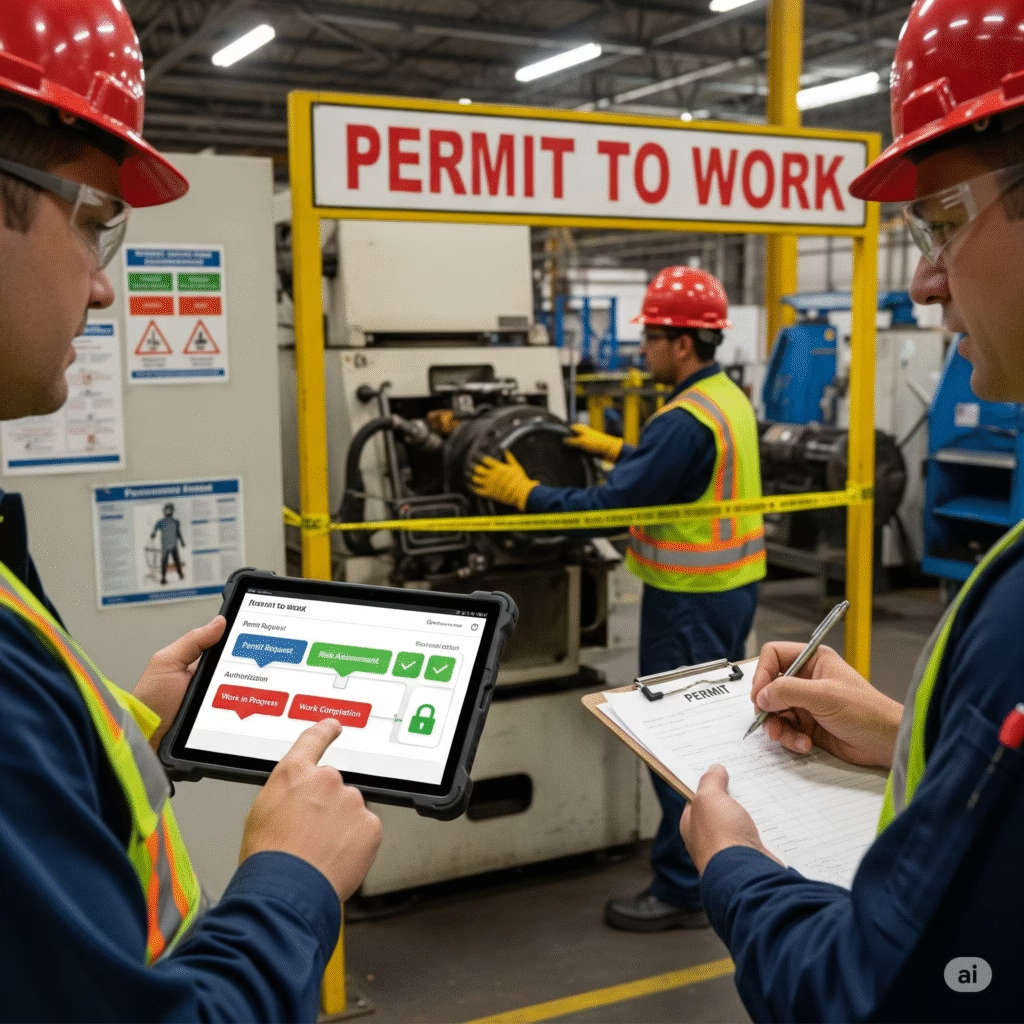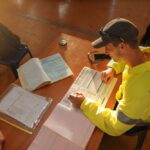Introduction:
The Permit to Work (PTW) process is a key safety measure in industrial environments. It ensures that high-risk tasks—like hot work, confined space entry, or electrical maintenance—are planned, authorized, and carried out safely. The permit to work process helps prevent accidents by verifying hazards, assigning responsibilities, and ensuring controls are in place before work begins.
Steps in the Permit to Work Process:
Step 1: Job Request for Permit to Work
The process begins when a worker or supervisor identifies a task that requires a permit (e.g., hot work, confined space entry, electrical work). A formal request is made for the permit.
Step 2: Hazard Identification and Risk Assessment in the Permit to Work Process
Before approval, the job site is inspected to identify hazards. A risk assessment is conducted to identify potential dangers and determine the necessary measures to prevent harm.
Step 3: Preparing a safe work permit
The responsible person (often a safety officer or supervisor) prepares the permit. It includes:
- Task details
- Work location
- Safety precautions needed
- PPE required
- Duration of the permit
- Authorization signatures
Step 4: Approval Stage in the Permit to Work Process
A competent authority (such as a department head or safety manager) reviews and signs the permit after ensuring all safety conditions are met.
Step 5: Pre-Job Briefing Under the Permit to Work System
All workers involved receive a clear briefing on the permit details before work begins. Everyone must understand:
- The scope of work
- Hazards and controls
- Emergency procedures
Step 6: Performing Tasks Safely Under Permit Guidelines
The task is carried out under the conditions and timeframe specified in the permit. The permit must be displayed at the job site and updated if conditions change.
Step 7: Ongoing Monitoring During the Permit to Work Process
Supervisors or safety personnel periodically check the job to ensure all safety measures are followed and that no new hazards arise.
Step 8: Permit Closure and Final Checks
Once the job is complete, the work area is inspected. If it’s safe, the permit is signed off and officially closed. Copies are usually filed for records and audits.
Roles and Responsibilities in the Permit to Work Process:
A successful permit to work process depends on clearly defined roles. Each person involved has specific responsibilities to ensure work is performed safely and in compliance with procedures.
- Permit Issuer (or Authorizing Person)
- Reviews the job and associated hazards
- Ensures all safety controls are in place
- Monitors ongoing work for compliance
- Permit Holder (or Performing Authority)
- Accepts the permit and understands all conditions
- Ensures the work team follows safety procedures
- Communicates any changes or new hazards during work
- Returns the permit upon task completion
- Work Team / Operators
- Follow instructions given in the permit
- Use appropriate PPE and safety tools
- Report issues or unsafe conditions immediately
- Stop work if conditions change unexpectedly
- Safety Officer / EHS Personnel
- Verifies that safety protocols are followed
- Audits the permit system for effectiveness
- Provides training and guidance to teams
- Supports risk assessments and safety reviews
- Site Manager / Supervisor
- Oversees the entire PTW process at the site
- Ensures coordination between departments
- Enforces safety standards and accountability

Common Barriers to Effective Work Permit Systems:
While the permit to work process is essential for industrial safety, its effectiveness can be hindered by several common challenges:
1. Manual and Paper-Based Systems
Traditional PTW systems often rely on handwritten permits, which can be time-consuming, error-prone, and hard to track.
2. Lack of Training on the PTW Process
Inadequate training can result in incorrect permit usage or failure to recognize high-risk situations.
3. Poor Communication Between Teams
Ineffective communication between maintenance, operations, and safety departments can delay work and lead to incidents.
4. Overlapping Permits or Confusion
Multiple permits issued for the same area without coordination can cause confusion and increase hazards.
5. Failure to Monitor Work Under PTW
Some teams neglect monitoring once a permit is issued, allowing unsafe conditions to develop unnoticed.
6. Resistance to Digital PTW Solutions
Switching to digital systems often meets resistance from staff unfamiliar with technology, slowing down improvements.

Conclusion:
The permit to work process is vital for maintaining safety in high-risk industrial tasks. It ensures hazards are identified, risks are controlled, and work is carried out safely. By following a structured PTW process, companies can prevent accidents, reduce liability, and protect both workers and operations.


